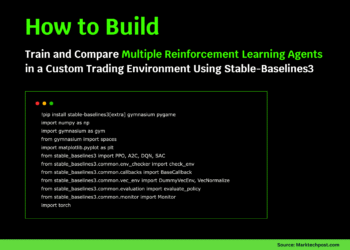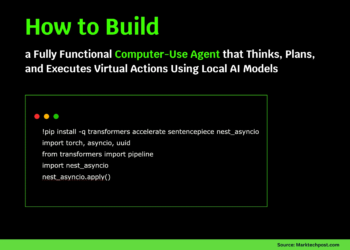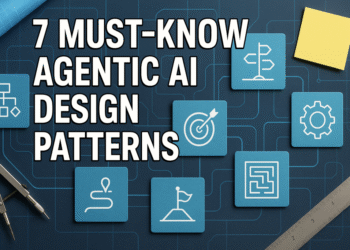As the development of large-scale AI systems accelerates, concerns about safety, oversight, and risk management are becoming increasingly critical. In response, Anthropic has introduced a targeted transparency framework aimed specifically at frontier AI models—those with the highest potential impact and risk—while deliberately excluding smaller developers and startups to avoid stifling innovation across the broader AI ecosystem.
Why a Targeted Approach?
Anthropic’s framework addresses the need for differentiated regulatory obligations. It argues that universal compliance requirements could overburden early-stage companies and independent researchers. Instead, the proposal focuses on a narrow class of developers: companies building models that surpass specific thresholds for computational power, evaluation performance, R&D expenditure, and annual revenue. This scope ensures that only the most capable—and potentially hazardous—systems are subject to stringent transparency requirements.
Key Components of the Framework
The proposed framework is structured into four major sections: scope, pre-deployment requirements, transparency obligations, and enforcement mechanisms.
I. Scope
The framework applies to organizations developing frontier models—defined not by model size alone, but by a combination of factors including:
- Compute scale
- Training cost
- Evaluation benchmarks
- Total R&D investment
- Annual revenue
Importantly, startups and small developers are explicitly excluded, using financial thresholds to prevent unnecessary regulatory overhead. This is a deliberate choice to maintain flexibility and support innovation at the early stages of AI development.
II. Pre-Deployment Requirements
Central to the framework is the requirement for companies to implement a Secure Development Framework (SDF) before releasing any qualifying frontier model.
Key SDF requirements include:
- Model Identification: Companies must specify which models the SDF applies to.
- Catastrophic Risk Mitigation: Plans must be in place to assess and mitigate catastrophic risks—defined broadly to include Chemical, Biological, Radiological, and Nuclear (CBRN) threats, and autonomous actions by models that contradict developer intent.
- Standards and Evaluations: Clear evaluation procedures and standards must be outlined.
- Governance: A responsible corporate officer must be assigned for oversight.
- Whistleblower Protections: Processes must support internal reporting of safety concerns without retaliation.
- Certification: Companies must affirm SDF implementation before deployment.
- Recordkeeping: SDFs and their updates must be retained for at least five years.
This structure promotes rigorous pre-deployment risk analysis while embedding accountability and institutional memory.
III. Minimum Transparency Requirements
The framework mandates public disclosure of safety processes and results, with allowances for sensitive or proprietary information.
Covered companies must:
- Publish SDFs: These must be posted in a publicly accessible format.
- Release System Cards: At deployment or upon adding major new capabilities, documentation (akin to model “nutrition labels”) must summarize testing results, evaluation procedures, and mitigations.
- Certify Compliance: A public confirmation that the SDF has been followed, including descriptions of any risk mitigations.
Redactions are allowed for trade secrets or public safety concerns, but any omissions must be justified and flagged.
This strikes a balance between transparency and security, ensuring accountability without risking model misuse or competitive disadvantage.
IV. Enforcement
The framework proposes modest but clear enforcement mechanisms:
- False Statements Prohibited: Intentionally misleading disclosures regarding SDF compliance are banned.
- Civil Penalties: The Attorney General may seek penalties for violations.
- 30-Day Cure Period: Companies have an opportunity to rectify compliance failures within 30 days.
These provisions emphasize compliance without creating excessive litigation risk, providing a pathway for responsible self-correction.
Strategic and Policy Implications
Anthropic’s targeted transparency framework serves as both a regulatory proposal and a norm-setting initiative. It aims to establish baseline expectations for frontier model development before regulatory regimes are fully in place. By anchoring oversight in structured disclosures and responsible governance—rather than blanket rules or model bans—it provides a blueprint that could be adopted by policymakers and peer companies alike.
The framework’s modular structure could also evolve. As risk signals, deployment scales, or technical capabilities change, the thresholds and compliance requirements can be revised without upending the entire system. This design is particularly valuable in a field as fast-moving as frontier AI.
Conclusion
Anthropic’s proposal for a Targeted Transparency Framework offers a pragmatic middle ground between unchecked AI development and overregulation. It places meaningful obligations on developers of the most powerful AI systems—those with the greatest potential for societal harm—while allowing smaller players to operate without excessive compliance burdens.
As governments, civil society, and the private sector wrestle with how to regulate foundation models and frontier systems, Anthropic’s framework provides a technically grounded, proportionate, and enforceable path forward.
Check out the Technical details. All credit for this research goes to the researchers of this project. Also, feel free to follow us on Twitter, Youtube and Spotify and don’t forget to join our 100k+ ML SubReddit and Subscribe to our Newsletter.
Nikhil is an intern consultant at Marktechpost. He is pursuing an integrated dual degree in Materials at the Indian Institute of Technology, Kharagpur. Nikhil is an AI/ML enthusiast who is always researching applications in fields like biomaterials and biomedical science. With a strong background in Material Science, he is exploring new advancements and creating opportunities to contribute.


















